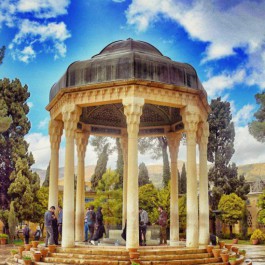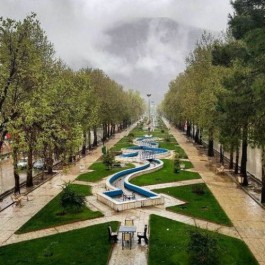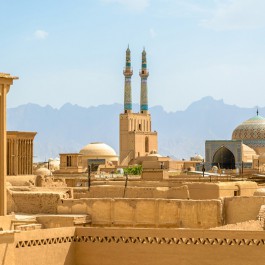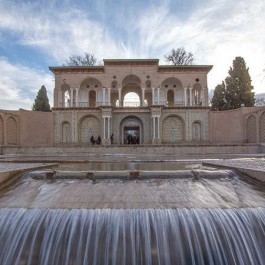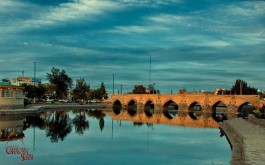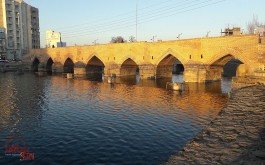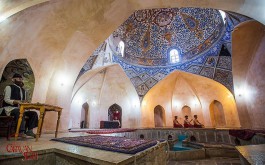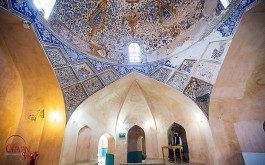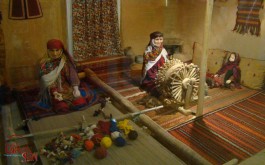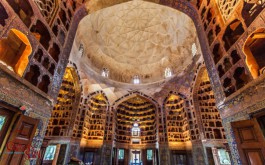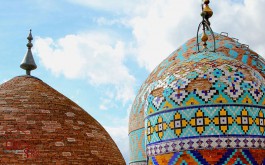Ardabil is one of the best regions of Iran during spring and summer due to its pleasant climate. Ardabil is also an ideal option for arranging exploration tours as it attracts numerous foreigner tourists whole the year. This spectacular city is among Iranian metropolises in the north west of the country. The province has been the capital of Azerbaijan before and after "Muslim Conquest of Persia". Ardabil is a completely Persian name, as it will be discussed in the following, it means the Holy City.
Ardabil is one of the oldest regions of Iran that based on the found evidence; it dates back to 5000 years ago. In clay inscriptions of Sumer dynasty the city was quoted as "Arta" or "Arteta". There are historical monuments in Ardabil which prove its considerable antiquity. These remnants are as the followings: Atashgah village, Hir city, Shahrivar village, and Ardabil great mosque (also known as Masjid Jameh) where was a fire temple in the past.
Sheikh Safi al-Din Shrine
Sheikh Safi al-Din Shrine is considered as one of the most visited and famous tourist destinations in Ardabil province. This attraction is situated in Ali Ghapu square. The old well-known building is the tomb of Sheikh Safi-al Din who was the founder of Safavid sect. After his death, the building was constructed by the efforts of his son, Sadr-al Din Musa, in 1352 AD. Diverse parts were added to the building during Safavid kingdom in commemoration of Sheikh Safi-al Din.
Tomb of the princes
Tomb of the princes, the great Iwan, tomb of King Tahmasp's mother, Allah Allah tomb, Janatsara, Haramsara, Qandil Khaneh, Nanva Khaneh, and Naghareh Khaneh are only a few parts of Sheikh Saf-al Din's tomb that had been constructed in different eras. It is worth knowing that the grave of King Ismail I, the founder of Safavid dynasty, is also situated in this place.
In historical documents, it is quoted that Ardabil Great Mosque was a fire temple in the past which belongs to Sasanian dynasty. Afterwards, Muslim conquest of Persia occurred in the 5th century AH, which led to the conversion of the fire temple to the current Great Mosque or Jomeh Mosque. The main part of the mosque is situated beneath the dome or "Gonbad Khaneh" where occupies an enormous space.
Ardabil Anthropology Museum has also been known with other names such as Aqa Naqi Bath, Zaheer-ul Islam Bath where you can get familiar with the culture and local customs of the region's people. There are different types of statues with ethnic clothes of Ardabil people, remnants, and handwritings that exhibit the identity, history and culture of this region of the country. In fact, Ardabil Anthropology Museum is one of the ideal places to introduce the culture, customs, lifestyle, clothes, food, and the special rituals of this part of Iran.
One of the springs of Iran with high volume of water is called Gamish Goli mineral hot water pool which is 25 meters in length and 17 meters in width, located in Sarein, Ardabil province. There are tall walls surrounding the whole pool; in addition, hot water and gas emit from different points of the pool's floor and exit from the eastern channel. Water of Gamish Goli Spring has a temperature of 45 degrees centigrade with 30 lit/s water discharge. The region is covered by alluvial sediments of the fourth geology era and some volcanic remnants can be observed in some points.
Haft Cheshmeh Bridge
Haft Cheshmeh Bridge (also known as Dash Kasan Bridge) can be named as a tourist spot in Ardabil province. This tourist destination is located in Panzdaheh Khordad Square which so far, possesses many names as the followings: Yadi Guzli, Jajin, Korpi Ghermez and Dash Kasan Bridge. Designers of the bridge constructed it with seven- arched openings made of brick and stone breakwaters. Lime and plaster are among materials which were used to construct the bridge. The bridge dates back to Safavid dynasty that was deteriorated as the time went by. In 1995 AD, renovation measurements were made to rehabilitate the bridge. Haft Cheshmeh Bridge was registered as a national heritage in August 1969 AD.
Neor Lake
Neor Lake is located in a 48 kilometers distance to the south east of Ardabil that has two large and small lakes within itself. The two mentioned lakes link to each other in spring season and create a united lake which is 5 meters in depth. Water of the lake is used for irrigating farmland. Annually, a few numbers of juvenile rainbow trout are scattered in the lake to control the population of the existing Gammarus in the lake that are collected in winter season due to the icy coldness of the water.
